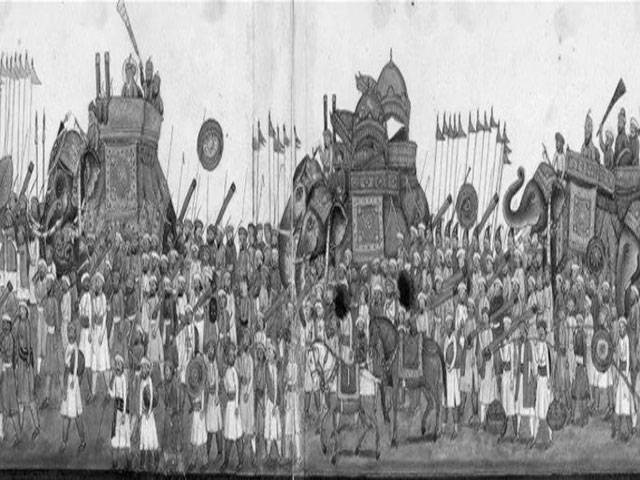“Like us many have spoken over this spring,
but they were gone in the twinkling of an eye. We conquered the world with bravery and might, but we did not take it with us to the grave.”
Zahir-ud-din Muhammad Babur
For the Mughals, Eid was a royal occasion. The last Friday of Ramadan would be especially important, and was known as the Alvida. On the twenty-ninth day of Ramzan, envoys were sent to sight the moon. If someone saw the moon, celebrations would begin. At the naqqarkhana (drum house), a 25-gun salute was given for the advent of Eid the next day.
The guns, shamianas and carpets were sent to the eidgah. The elephants were painted and in the morning, the Badshah changed into jeweled robes. The dastarkhwan was quickly laid out with royal food. After tasting, the Badshah would go outside. The jasolni would immediately call out to alert every one of his presence. The Badshah would go to the Diwan-e-Aam on the elephant. A 21-gun salute would be given.
The Badshah would go into the royal tent where his prayer rug had been spread out. After the namaz, the imam would read the khutba. The armoury superintendent would tie a sword, and bow-and-arrow around the imam’s waist. On completion of prayers, one gun was fired in honour of the khutba. The Badshah then goes back to the Qila, and holds court in the Diwan-e-Khas on the Peacock Throne.






